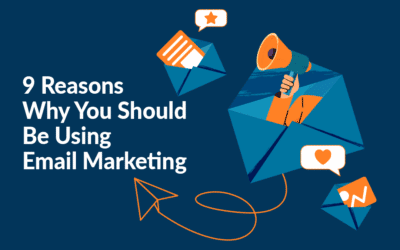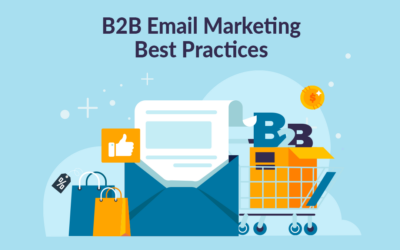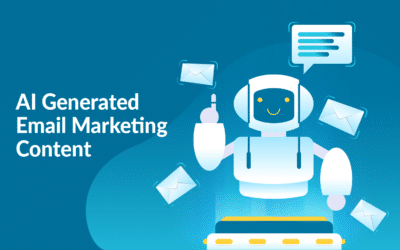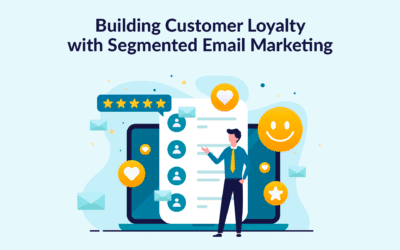What is Personalized Email Marketing?
Let us first describe personalized email marketing. It’s email content that is customized and targeted to individual recipients. This is based on their relevant data. Which is better than sending generic, one-size-fits-all emails to an entire subscriber list.
Crafting personalized email marketing involves designing content that resonates with each recipient. This ensures the message connects on a personal level. Personalization can include delivering targeted content. Another example would be using the recipient’s name in the subject line. All that is based on the recipient’s past interactions with your business.
Benefits of Personalized Email Marketing
Businesses are looking to engage their audience more effectively and drive results. Thus personalized email marketing offers several benefits for them. Some of the key importance and benefits include.
- Increased Relevance
Personalized emails are more relevant to recipients. It’s because they are tailored to their interests, preferences, and past interactions. This relevance leads to higher open rates and click-through rates. Thus it leads to better engagement with your email campaigns.
- Improved Customer Experience
Personalized email marketing enhances the customer experience. It’s done by delivering content that is specifically relevant to each recipient. Thus customers feel understood and valued. This is inevitable when they receive such emails. It’s because they address their individual needs and preferences. This leads to stronger relationships with your business.
- Higher Conversion Rates
Personalized emails are more likely to drive conversions. It’s because they speak directly to the recipient’s needs and interests. Promoting a product they’ve shown interest in is a good example. Or offering a personalized discount is a good one as well. Ultimately, targeted email content is more persuasive and effective at driving action.
- Better Segmentation and Targeting
Personalized email marketing allows you to segment your audience more effectively. And also enables targeting specific groups with tailored messaging. Try dividing your subscribers. Base it on factors such as demographics, behavior, or buying history. This way you can deliver highly relevant content that resonates with each segment.
- Increased Brand Loyalty and Retention
Let’s say that customers receive personalized emails that cater to their individual preferences. As a result, they will be more likely to feel valued and appreciated by your business. Customers will develop a stronger relationship with your products or services. This can lead to increased customer loyalty and repeat purchases over time.
Personalized email marketing is a powerful strategy. It builds stronger relationships with your audience. It is also driving engagement and conversions, and ultimately, achieving your marketing goals. Try leveraging data-driven insights and delivering relevant, targeted content. This way businesses can maximize the impact of their email campaigns. Additionally, they can create meaningful connections with their customers. Data can be handled with a customer data platform (CDP). A customer data platform can be key to business growth and success.
Understanding Your Audience
It is important to have a deep understanding of the audience. Especially when designing effective personalized email marketing campaigns. This involves several steps:
- Market segmentation
- Collecting data
- Analyzing customer data
- Creating buyer personas
1) Market Segmentation
Market segmentation involves dividing your audience into distinct groups based on shared characteristics. , interests, behaviors, or demographics. By segmenting your audience, you can tailor your email content. This will better resonate with each group’s specific needs and preferences. Some common segmentation criteria include:
- Demographic information
- Age, gender, location, income, etc.
- Behavioral data
- Buying history, website interactions, email engagement, etc.
- Psychographic factors
- Lifestyle, interests, values, attitudes, etc.
Segmentation allows you to send targeted email marketing. They are more relevant and personalized. This leads to higher engagement and conversion rates of your email marketing campaigns.
2) Collecting Data
Collecting data is the first step in understanding your audience for personalized email marketing. This process involves gathering information from various sources. The data is then used to build a comprehensive view of your customers. Key methods for data collection include:
- Customer Surveys
Surveys are a direct way to gather valuable insights about your customers. Data like preferences, needs, and behaviors. Surveys can be used to get specific information for personalized email marketing strategies.
- Website Analytics
Find out what content interests your visitors. Analyze your website traffic, page views, and user interactions. MarketingPlatform can help you track user behavior and identify patterns.
- Social Media Insights
Social media platforms offer a wealth of data on customer demographics, interests, and engagement. Use these insights to understand what topics resonate with your audience.
Effective data collection is the foundation of targeted email campaigns. The more detailed and accurate your data, the better you can tailor your emails to meet your audience’s needs.
3) Analyzing Customer Data
Once you’ve collected the data, the next step is analyzing it to extract actionable insights. Data analysis helps you identify key information. Insights like trends, patterns, and customer behaviors. Key aspects to consider include:
- Segmentation Analysis
Review the data to segment your audience into groups based on shared characteristics. Segment on factors like age, location, or purchasing behavior. This allows for more relevant and personalized email marketing content.
- Behavioral Analysis
Look at how customers interact with your business. Focus on their buying history, email open rates, and website visits. Understanding these behaviors helps you predict future actions and create personalized email marketing.
- Trend Identification
Identify trends in customer preferences and market shifts. Make sure you understand trends. Thus you can adjust your email content. Thus better meet customer expectations and increase engagement.
Data analysis enables you to refine your email marketing strategies. This ensures your emails are both relevant and effective.
4) Creating Buyer Personas
Creating buyer personas involves transforming your analyzed data into detailed profiles. Profiles that represent different segments of your audience. These personas are fictional yet data-driven characters. They embody the key traits of your ideal customers. Here is how to build effective buyer personas:
- Demographic Information
Include basic details like age, gender, income, and occupation. These elements help you visualize who your target audience is on a surface level.
- Behavioral and Psychographic Insights
Dive deeper into your personas. Add information about their interests, values, and pain points. This makes your persona more realistic and relatable.
- Personalization Strategy
Use your buyer personas to tailor email content. Speak directly to the needs and preferences of each segment. Personas interested in budget-friendly options should receive emails highlighting discounts and promotions.
Creating detailed buyer personas ensures your personalized email marketing is focused. This leads to higher engagement and conversion rates.
How to Craft Compelling Personalized Email Marketing Content
Craft compelling content. It is the key to the success of your personalized email marketing campaigns. This section will explore:
- The importance of relevant and engaging content
- Provide tips for writing personalized subject lines and email copy
- Discuss the power of storytelling and emotional appeal
- Highlight the use of dynamic content and personalized shopping feeds
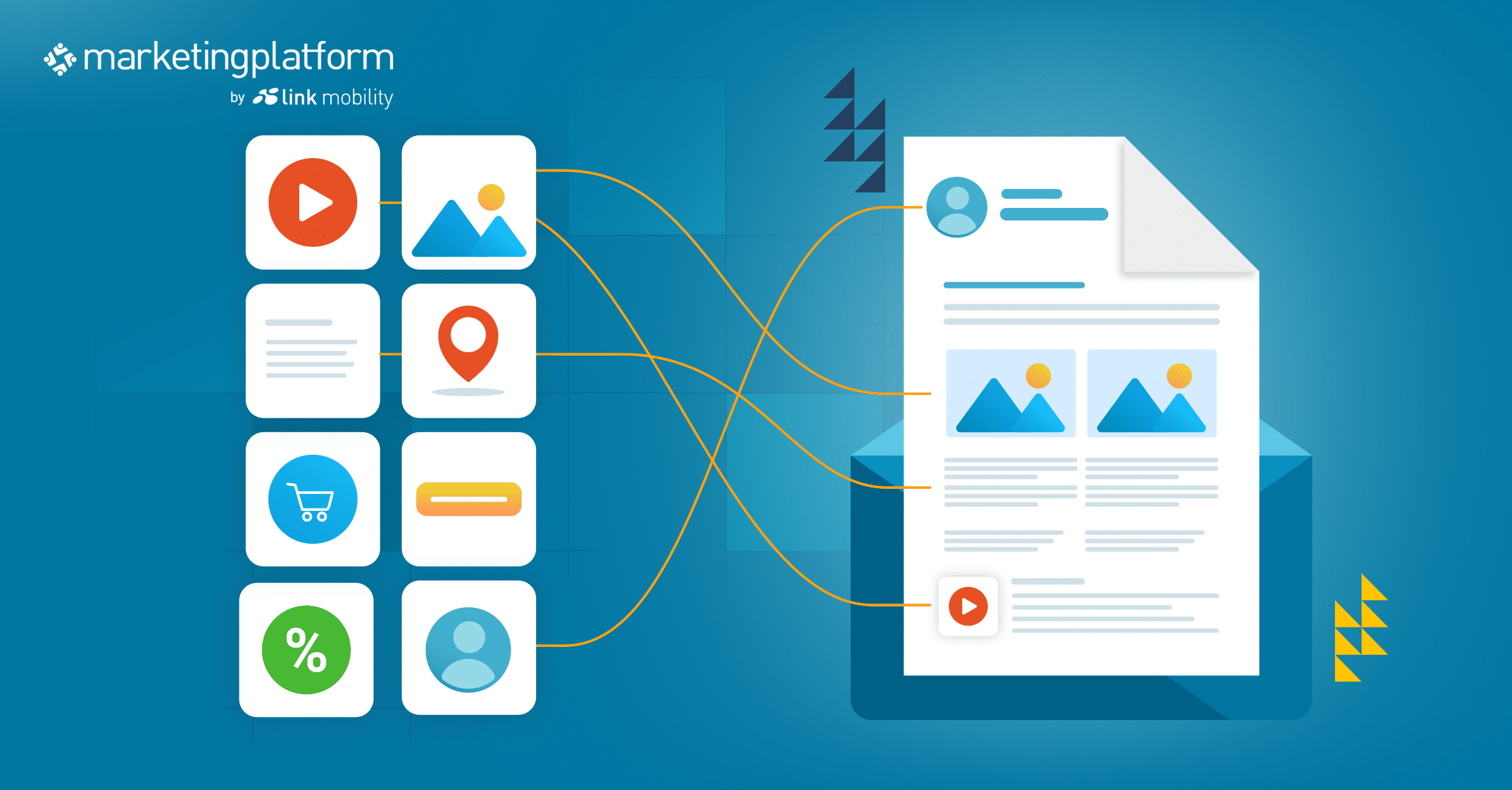
1) Relevant and Engaging Content
The foundation of effective personalized email marketing is relevant and engaging content. When recipients open an email, they expect to find something valuable. Information that resonates with their interests and/or needs is a good choice. Below are some benefits. They show why relevant and engaging content is key. It makes the personalized email marketing content effective.
- Higher open and click-through rates
Use emails with relevant subject lines and content. Recipients are more likely to open and click on them.
- Improved engagement
Write engaging content. It encourages recipients to read the entire email, click on links, and act.
- Enhanced brand perception
Providing valuable content builds trust and credibility with your audience. It’s enhancing their perception of your business.
2) Writing Personalized Subject Lines and Email Copy
Do you need something with a significant impact on the success of your email campaigns? Then use personalized subject lines and email copy. Here are some tips for writing personalized subject lines and email copy.
- Use the recipient’s name
Include the recipient’s name in the subject line and the opening greeting. Thus grab their attention. It will make the email feel more personal and targeted to the individual.
- Segmentation-based messaging
Be wise when crafting your subject lines and email copy. Base it on the recipient’s interests, preferences, or past interactions with your brand.
- Create an incentive to open the email
Use words and phrases that create a sense of urgency or exclusivity. Thus encourage recipients to take immediate action and click to open the email.
- Keep it Concise and Clear
Keep your subject lines and email copy almost as concise and to the point as your SMS marketing. Focus on delivering value and driving action.
3) Incorporating Storytelling and Appealing Topics
Storytelling and appealing content can make your email content more memorable and impactful. Please do tell stories that resonate with your audience’s emotions and situation. Thus, you can create a deeper connection with recipients and drive engagement. How to incorporate storytelling and emotional appeal into your email marketing? Here are three tips on it:
- Tell compelling stories
Share customer success stories and relatable case studies. Or try useful anecdotes that prove the value of your products or services in a relatable way. - Evoke emotion
Use language and imagery that evoke emotions such as joy, nostalgia, or empathy. Thus, creating a memorable and emotional response from recipients. - Focus on benefits, not features
Don’t just list features. There are certainly more appropriate times to talk about features. It’s not for your personalized email marketing. Rather save that for your website. Highlight the benefits of your products or services. Point up how they can positively impact the recipient’s work or life.
4) Using Dynamic Content and Personalized Shopping Feeds
Dynamic content and personalized shopping feeds allow you to deliver highly relevant and personalized content to each recipient. That’s based on their preferences, behavior, and past interactions.
- Dynamic content. In personalized email marketing, it refers to elements that change. It is based on recipient data.
- Personalized shopping feeds. They display products tailored to individual preferences, enhancing engagement and conversion.
Here is how you can leverage dynamic content and personalized shopping feeds:
- Product recommendations
Use dynamic content blocks to showcase personalized product recommendations. Base it on the recipient’s browsing, buying history, engagement, or other relevant data.
- Data-driven offers and discounts
Deliver personalized offers, discounts, or promotions. Tailor them to the recipient’s preferences and buying behavior.
- Relevant real-time updates
Use personalized shopping feeds. Provide real-time updates on product availability, price drops, or back-in-stock items.
Incorporate dynamic content and personalized shopping feeds into your email marketing campaigns. Thus, you can deliver more relevant and timely content to your audience. This will lead to increasing engagement and driving conversions.
Craft compelling email content. It’s essential for the success of your personalized email marketing campaigns. Focus on relevance, personalization, storytelling, and dynamic content. So, you can create email campaigns that:
- Resonate with your audience
- Drive engagement
- Achieve your marketing goals
Designing Personalized Email Marketing Templates
Ensure your emails resonate with recipients across various segments. The first and most fundamental step is designing personalized email marketing templates. To deliver impactful personalized email experiences crafting these templates requires careful consideration of:
- Audience segmentation
- Dynamic content integration
- Mobile responsiveness
Customizing Email Templates for Different Segments
Tailoring email templates for distinct audience segments enhances relevance and engagement. Consider demographics, preferences, and behaviors to craft personalized templates. Thus, resonate with each group’s unique interests.
Utilizing Dynamic Content, Personalized Shopping Feeds, and Merge Tags
Real-time customization based on recipient data is enabled by:
- Dynamic content
- Personalized shopping feeds
- Merge tags
Incorporate these elements to deliver personalized product recommendations, tailored messaging, and individualized offers.
Optimizing for Mobile Responsiveness
Ensure email templates are optimized for various devices. It is not a choice, but a necessity. Responsive design creates a seamless and enjoyable viewing experience. It adjusts to the recipient’s device. Thus enhancing accessibility and engagement.
Automation and Data in Personalized Email Marketing
Use automation and data effectively. This will significantly enhance the personalization of your email marketing efforts. It can also improve their efficiency. This section:
- Introduces email marketing automation
- Explores MarketingPlatform as an example of a marketing automation platform
- Discusses implementing automation flows and triggered emails
- Emphasizes the importance of using customer data for enhanced personalization
Incorporate automation and data-driven personalization strategies into your email marketing efforts. It enables you to deliver highly personalized and relevant messages to your audience. Additionally, it ensures that these messages are timely. Ultimately driving better results and fostering stronger customer relationships.
It enables you to deliver highly personalized and relevant messages to your audience. Additionally, it ensures that these messages are timely.
What is Email Marketing Automation?
Marketing automation platforms enable businesses to create and execute advanced email marketing campaigns. Thus, saving time and resources while maximizing effectiveness. An example of such a system is MarketingPlatform. Email marketing automation streamlines the process of sending targeted emails. It also personalizes emails to your audience at scale.
MarketingPlatform is a marketing automation platform. It empowers businesses to create and send personalized email marketing campaigns. The platform has user-friendly features like drag-and-drop email and flow builders. It also provides advanced segmentation features and robust analytics. MarketingPlatform enables users to deliver highly targeted and engaging emails. Thus tailoring communication to individual customer preferences.
Email Automation Flows for Different Situations and Segments
Put in place email automation flows. They allow you to send relevant messages to customers. Furthermore, these flows will capitalize on key moments in the customer’s journey. Create automation sequences tailored to various situations and segments, such as:
- Welcome series for new subscribers
- Abandoned cart reminders
- Post-purchase follow-ups
- Re-engagement campaigns for inactive subscribers
Triggered Emails and Automation Flows Based on Bustomer Behavior
Triggered emails are sent automatically in response to customer actions, such as:
- Website visits
- Email opens
- Clicks
- Purchases
Install triggered email campaigns to deliver timely and personalized messages. Or you can transfer them to automation flows. This communication resonates with customers’ interests and preferences.
Using Customer Data to Enhance Personalization
Customer data serves as the foundation for effective personalized email marketing. Customer and user data can have practical usage. Thus, creating target email marketing content, subject lines, offers, and recommendations. The right approach can determine email marketing success or failure. Harness customer data effectively. This way businesses can create targeted email campaigns that drive engagement and conversions.
How to Analyze Results of Personalized Email Marketing
Track and analyze the performance of your personalized email marketing campaigns. It is important to optimize strategies and drive continued success with your campaigns. This section delves into key metrics to refine your strategies:
- Track
- Tests
- Analyze and optimize
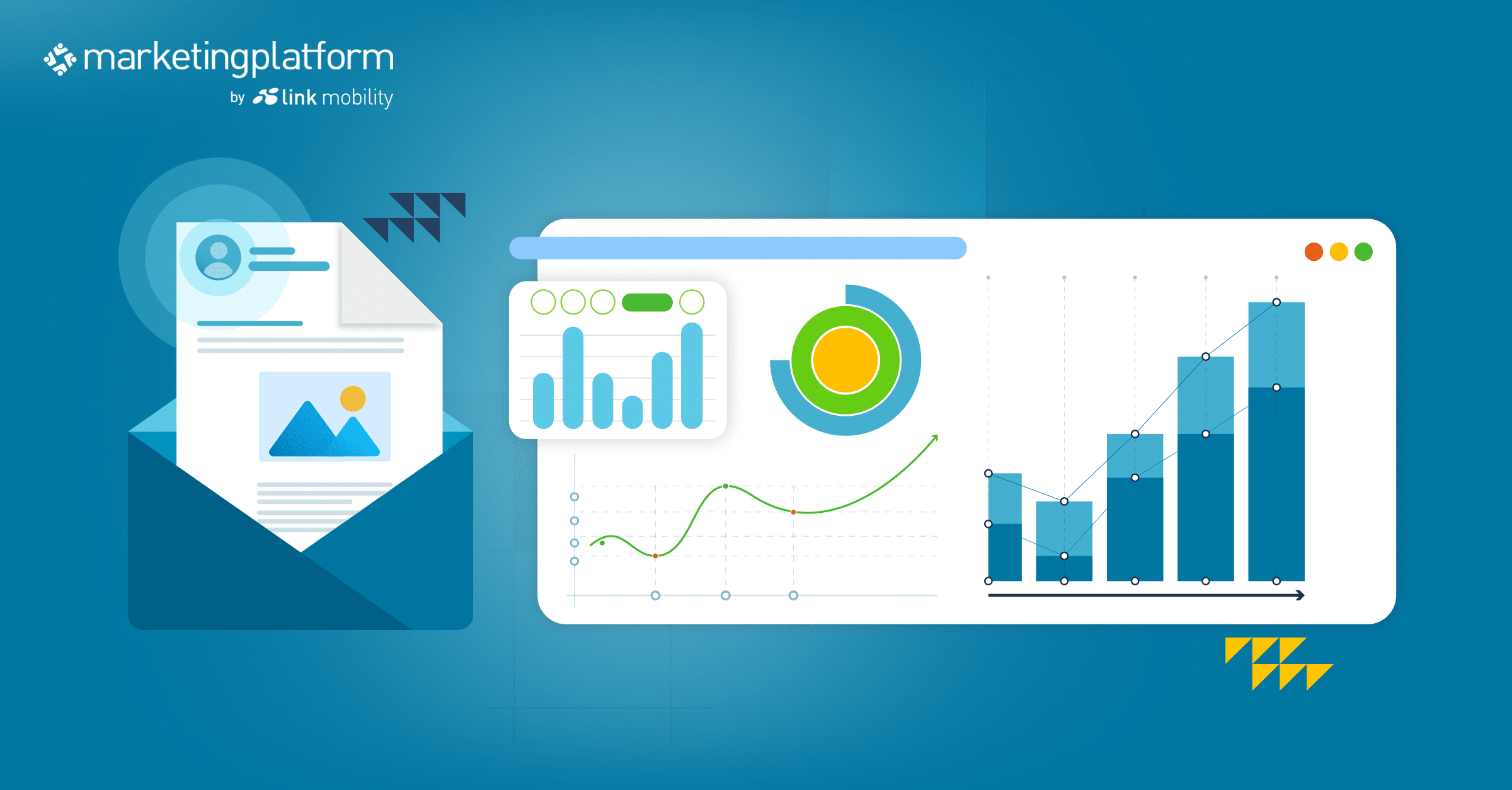
1) Key Metrics to Track for Personalized Email Marketing Campaigns
- Open rate
Measure the percentage of recipients who open your emails. A high open rate indicates effective subject lines and relevance. - Click-through rate (CTR)
Track the percentage of recipients who click on links within your emails. A high CTR indicates engaging content and effective call-to-action. - Conversion rate
Measure the percentage of recipients who complete a desired action. Some examples are buying or signing up for a webinar, after clicking on a link in your email. - Revenue generated
Track the revenue generated directly from your personalized email marketing efforts. It includes purchases made because of email marketing campaigns. - Unsubscribe rate
Understand the relevance and effectiveness of your campaigns. Track the number of recipients who unsubscribe from your emails or mark them as spam.
2) A/B testing for Optimization of Your Campaigns
A/B testing is also known as split testing. It involves comparing two versions of an email or element within an email. The goal is to determine which performs better. Test variables such as:
- Subject lines
- Email copy
- Call-to-actions
- Images
- Send time
Testing helps you understand and identify what resonates most with your audience. Continuously optimize your personalized email marketing campaigns. Based it on the results of A/B testing. This helps improve engagement and conversion rates over time.
3) Best Practices for Analyzing Data to Refine Strategies
Try refining personalized email marketing strategies through data analysis. Consider the following best practices:
- Set clear and achievable goals
Define specific goals for your email marketing campaigns. It can be increasing sales, driving website traffic, or boosting engagement. - Regularly check performance
Continuously track key metrics and performance indicators. Identify trends, patterns, and areas for improvement. - Segmentation analysis
Analyze the performance of your campaigns across different audience segments. Thus, identify which segments respond best to certain types of content, products, or messaging.
- Attribution modeling
Use attribution modeling to understand the impact of your email marketing efforts. See conversions and revenue, including both direct and indirect contributions. - Optimization
Optimize performance and maximize results. Based on your analysis, make data-driven adjustments to:- Your email marketing content
- Segmentation strategies
- Send times
- Automation flows
Effectively analyze the results of your personalized email marketing campaigns. So you can get valuable insights into what resonates with your audience. Then refine your strategies to drive better outcomes and ROI.
Compliance and Privacy Practices
In the realm of personalized email marketing, compliance with regulations is paramount. Respect customers’ privacy. Ensure you understand regulations like the General Data Protection Regulation (GDPR). Also adhering to local laws is essential. GDPR, for instance, mandates transparent data handling. It requires explicit consent from individuals before processing their personal data.
Before sending email marketing campaigns, it is imperative to get consent from recipients. Then clearly communicate how their data will be used. Transparency fosters trust and ensures compliance with regulations. Respecting customer privacy entails honoring their preferences about:
- Communication frequency
- Content
- The use of their data
Aligning email marketing practices with regulatory requirements is important to mitigate legal risks. But compliance is not just a legal obligation. Senders need to focus on customer privacy and preferences too. As a result, businesses can build brand reputation and trust with their audience.
Elevate Your Email Marketing Strategy with Personalization
Personalized email marketing is not just a trend. It is a powerful strategy that can transform how you connect with your audience. Ensure you understand and use data-driven insight. As a result, your emails will resonate on a personal level. This leads to stronger engagement, higher conversion rates, and lasting brand loyalty.
Remember, the key to successful personalized email marketing lies in continuous refinement. Analyze your results and adapt your strategies. Then prioritize the needs and preferences of your audience. Start implementing these personalized techniques and watch your email campaigns achieve success.
This blog post has also appeared in a MarketingPlatform Newsletter.
Author: Theodor Nørgaard, head of marketing & digital
Try MarketingPlatform for free for 14 days
The trial period is free, completely non-binding and expires after 14 days if you do not wish to continue.
When you sign up, you will also receive our educational flow via a series of emails along with our newsletter with regular updates.


